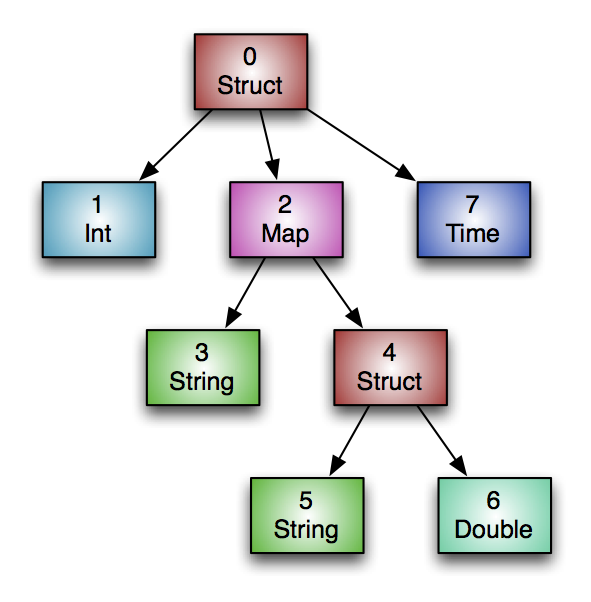Types
ORC files are completely self-describing and do not depend on the Hive Metastore or any other external metadata. The file includes all of the type and encoding information for the objects stored in the file. Because the file is self-contained, it does not depend on the user’s environment to correctly interpret the file’s contents.
ORC provides a rich set of scalar and compound types:
- Integer
- boolean (1 bit)
- tinyint (8 bit)
- smallint (16 bit)
- int (32 bit)
- bigint (64 bit)
- Floating point
- float
- double
- String types
- string
- char
- varchar
- Binary blobs
- binary
- Decimal type
- decimal
- Date/time
- timestamp
- timestamp with local time zone
- date
- Compound types
- struct
- list
- map
- union
All ORC file are logically sequences of identically typed objects. Hive always uses a struct with a field for each of the top-level columns as the root object type, but that is not required. All types in ORC can take null values including the compound types.
Compound types have children columns that hold the values for their sub-elements. For example, a struct column has one child column for each field of the struct. Lists always have a single child column for the element values and maps always have two child columns. Union columns have one child column for each of the variants.
Given the following definition of the table Foobar, the columns in the file would form the given tree.
create table Foobar (
myInt int,
myMap map<string,
struct<myString : string,
myDouble: double>>,
myTime timestamp
);

Timestamps
ORC includes two different forms of timestamps from the SQL world:
- Timestamp is a date and time without a time zone, which does not change based on the time zone of the reader.
- Timestamp with local time zone is a fixed instant in time, which does change based on the time zone of the reader.
Unless your application uses UTC consistently, timestamp with local time zone is strongly preferred over timestamp for most use cases. When users say an event is at 10:00, it is always in reference to a certain timezone and means a point in time, rather than 10:00 in an arbitrary time zone.
| Type | Value in America/Los_Angeles | Value in America/New_York |
|---|---|---|
| timestamp | 2014-12-12 6:00:00 | 2014-12-12 6:00:00 |
| timestamp with local time zone | 2014-12-12 9:00:00 | 2014-12-12 6:00:00 |
